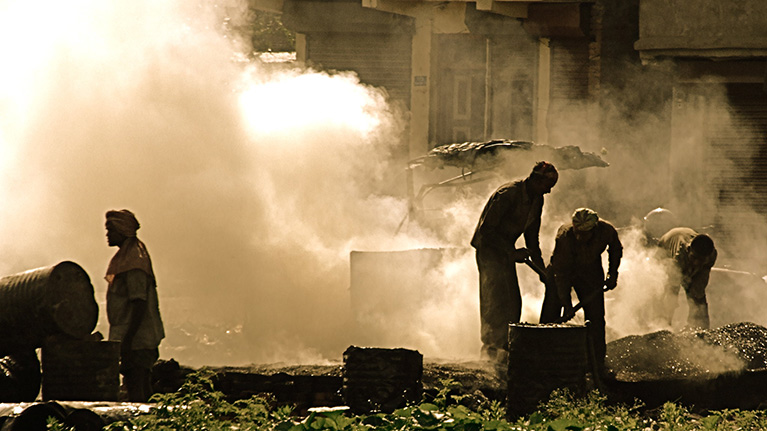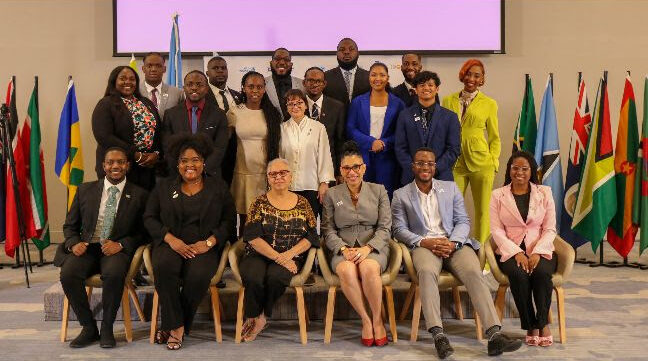This news article is a production distributed through Caribbean News Service. It is made freely available to your media and we encourage publishing and redistribution, giving credit to Caribbean News Service (CNS).
By Dizzanne Billy – CNS Contributor
PORT-OF-SPAIN, Trinidad, Dec 08 2015 – Do you remember that groovy 90’s tune by Counting Crows and Vanessa Carlton that goes, “they paved paradise and put up a parking lot…took all the trees and put them in a tree museum and charged the people a dollar and a half to see ‘em.” These words ring very true in Trinidad and Tobago (T&T).
T&T is losing its green.
Propulsion toward the world’s generalised version of ‘development’ has seen greater emphasis on the destruction of green spaces and inclination toward skyscrapers and paved roads. This does nothing to help fight climate change. Small Island Developing States (SIDS) in particular have at least four natural defences against sea level rise, storm surges, and coastal erosion – coral reefs, seagrass beds, beaches, and our mangrove forests.
We do not need concrete to survive. What we do need is clean oxygen, which is provided by green spaces. Mangroves provide a host of ecosystem services related to climate change adaptation, such as water quality maintenance/pollution control, storm protection, carbon sequestration, and protection against coastal erosion, just to name a few. So why don’t we treat these majestic trees with more respect? Green spaces in our cities are clearly vital for our continuation as a species. However, in Trinidad and Tobago mangroves in particular are disappearing at alarming rates.
According to Rianna Gonzales, National Coordinator of the Caribbean Youth Environment Network- T&T, “for our country, we thrive on the development of the coastlines and this affects our mangroves forests as they are destroyed to make way for ports and tourism-related development. On our western coast, to build one of the four oil and gas companies, mangroves were demolished. This affected beaches and coastal infrastructure which would otherwise protect T&T from some climate change impacts.”
Estimates by the United Nations Environment Programme (UNEP) suggest that cities are responsible for 75 percent of global carbon emissions, with transport and buildings being among the largest contributor. At the same time, cities are also vulnerable to climate change impacts.
In Port-of-Spain, the capital of T&T, mangrove forests have been ruined. Even though two of our major mangrove forests are protected by the RAMSAR Convention, they aren’t necessarily protected by enforced local law. “We really need to move from the black and white and act on the promises we made to the environment. Signatures on paper mean nothing if there is no action,” Gonzales stressed.
Cities are highly concentrated with people, cars, and buildings. They are busy with activities that need a lot of energy and therefore use more fossil fuel compared to rural areas. Many cities in the world such as Tokyo emit the carbon to as much as 62 million tons of greenhouse gas (GHG) emissions per year. Tokyo has more emissions in a year than 37 countries in Africa.
Earlier this year, Paris suffered from haze masking the city’s landmarks like the Eiffel Tower. Only yesterday, Beijing raised a “red alert” warning over smog and the city, from schools to business, has gone on a shutdown to protect its people. However, local government must remember the positive outcomes of long-term engagement strategies for creating and maintaining green spaces in the city. Fossil fuel companies in T&T however, continue to rule at the end of it all.
There are already cities in the world who have started on a path to sustainability. Speaking at a side event in COP21 called “Global Covenant of Mayors: Towards carbon neutral and inclusive cities”, Mayor Josefa Errazuris of the city of Providencia, Chile, shared “in order to protect our commune and the sustainability of our territory, we must have efforts to include climate change as part of policies.”
Where does T&T’s priorities and/or allegiances really lie?
Not only do we lack a ministry that is specifically dedicated to the environment, now the supposed ministry in charge of these affairs is called ‘Ministry of Planning and Development.’ Where did the word ‘sustainable’ go? A name has great meaning, so does this indicate the trajectory for development in T&T?
In a study done by the International Development Bank in 2014, mangrove restoration was identified as a key climate adaptation strategy for T&T, so why are they still being annihilated? If climate change adaptation is really a significant for policymakers in T&T then conservation of green spaces in our cities need to be prioritised and we need to break up with fossil fuel companies.
(Dizzanne Billy is President of the Caribbean Youth Environment Network (CYEN) in Trinidad and Tobago, where she works in the areas of education and public awareness with regard to environment and development issues. She is a climate tracker with Adopt-A-Negotiator and an advocate for climate change action).




